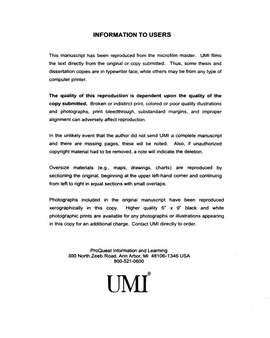| dc.description.abstract | The relationship between Detroit's underground presses---which included The Fifth Estate, Creem, Sun, the Artists' Workshop Press , the Inner City Voice, the South End Press, The Broadside Press, and Guerrilla---and the cultural realities of late 1960s Detroit is revealed in these presses' editorial policies and artistic content. A critical understanding of this relationships is framed by Henri Levebre's and Raymond Williams notions of place as a social and cultural construct. Their social theories inform an understanding of how social space and cultural texts interact to shape the political realities of a specific time and place, composing, as Williams describes, a "sociology of culture." From this conceptual foundation, it is possible to view the underground presses' artistic discourses, such as journalism, poetry, fiction, and visual art, as politically motivated modes of social and cultural critique, which were central to the kinds of dissent emerging in Detroit and elsewhere at the time. These discourses, often presented as means to a new consciousness, were used to interrogate and potentially to alter Detroit's urban consciousness and, therefore, its social possibilities. How, it is asked, did the underground presses function, as John Sinclair wondered, to "do something about Detroit?" The answer to this question uncovers the art, music, and philosophies---the enduring cultural artifacts---of Detroit's urban radicals and counter-culturalists. However, the answer also reveals the limits of 1960s' radicalism, counter-culturalism, and the significance of the political and cultural contributions of these occasionally misguided, criminal, and anti-intellectual editors, poets, musicians, and journalists. Yet the impression that lingers after an analysis of these presses is the desire, perhaps the audacity, to say something different in the face of enormous political and economic pressures to conform to the status quo. Even though these presses had their shortcomings, they still provided a counter-representation to the straight media's "humiliation" of history, as Jerry Herron states, and provided important insights into the every day possibilities of journalism, poetry, fiction, and visual art in the re-imagining of Detroit's social and cultural futures. | en_US |
